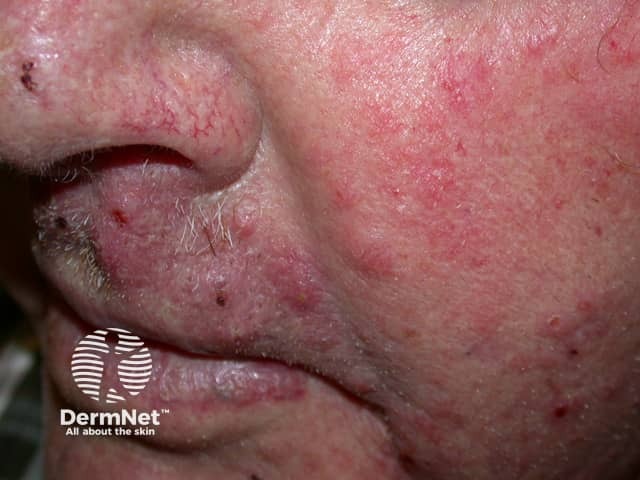Main menu
Common skin conditions

NEWS
Join DermNet PRO
Read more
Quick links
Author: Hon A/Prof Amanda Oakley, Dermatologist, Hamilton, New Zealand. 2003. Updated by Dr Jannet Gomez, November 2017.
Introduction
Causes
Clinical features
Diagnosis
Treatment
Avoidance
Tinea incognito is the name given to a fungal skin infection when the clinical appearance has been altered by inappropriate treatment, usually a topical steroid cream. It is also known as steroid-modified tinea. The result is that the original infection slowly extends and may mimic other skin disorders.
Often the patient and/or their doctor believe they have a dermatitis, hence the use of a topical steroid cream. The steroid cream dampens down inflammation so the condition feels less irritable. But when the cream is stopped for a few days the itch gets worse, so the steroid cream is promptly used again. The more steroid applied, the more extensive the fungal infection becomes and the less recognisable.
Tinea incognito was described by two UK dermatologists (Dr Adrian Ive and Dr Ronnie Marks), who later admitted that they should have correctly declined it as “tinea incognita”, as tinea is feminine. The majority of subsequent publications have followed this grammatical error.

Tinea incognita - foot

Tinea incognita - foot

Tinea incognita - groin

Tinea incognita - limb

Tinea incognita - limb

Tinea incognita - face
Tinea incognito is due to dermatophyte fungal infection (tinea), most often when it affecting the trunk and/or limbs (tinea corporis). Trichophyton rubrum is the most common organism to cause tinea corporis and tinea incognito in New Zealand.
Anti-inflammatory creams that can induce tinea incognito include:
Tinea incognito can also be caused by systemic steroids.
Underlying diseases may predispose individuals to infection, especially:
Factors such as sweating, abrasion, and maceration also contribute to the development of infection.
DermNet's page on tinea corporis describes its usual clinical features. Compared with an untreated tinea corporis, tinea incognito:
There may also be secondary changes caused by long term use of a topical steroid such as:
The diagnosis of tinea is most easily made by taking skin scrapings for microscopy and culture a few days after stopping all creams.
If a skin biopsy is performed, the pathology of tinea incognito reveals the organisms.
Tinea is usually treated with topical antifungals (such as miconazole, ketoconazole, econazole), but is likely to require oral antifungal medicines such as terbinafine and itraconazole.
Tinea incognito can be avoided if: